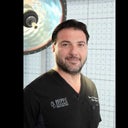Weight 40 Kg, I measure 1.54cm and my chest is 68 cm. Hello, my doctor had told me that I could get from 280 to 300 cc, when I looked at pictures and everything said I want a 325cc or 300cc. But today I went to consultation to decide my final measure, 240cc, 280cc and 300cc. The CC in the photo is 280cc. I was thinking about choosing that, I feel somewhat hesitant between 300cc and 280cc, because I do not want to see something exaggerated in my body that this little Thank you!!!
Answers (6)
From board-certified doctors and trusted medical professionals
Dr. Donovan Rosas, MD

Dr. Donovan Rosas, MD
Board Certified Plastic Surgeon
Answer
Dr. Payman Danielpour, MD, FACS

Dr. Payman Danielpour, MD, FACS
Board Certified Plastic Surgeon
Answer
Dr. Daniel Barrett, MD

Dr. Daniel Barrett, MD
Board Certified Plastic Surgeon
Answer
Dr. Tim Sayed, MD, MBA, FACS
Dr. Tim Sayed, MD, MBA, FACS
Board Certified Plastic Surgeon
Answer
Dr. Tom J. Pousti, MD
Dr. Tom J. Pousti, MD
Board Certified Plastic Surgeon
Answer
Dr. Jon A. Perlman, MD (retired)
Dr. Jon A. Perlman, MD (retired)
Board Certified Plastic Surgeon
Answer
More Breast Implants Questions
See all Breast Implants Q&AWE SEND PRETTY
EMAILS
What’s trending? Who’s turning heads? Which TikTok myths need busting? We’ve got you. No fluff, no gatekeeping—just real talk. Get our free, unfiltered newsletter.
